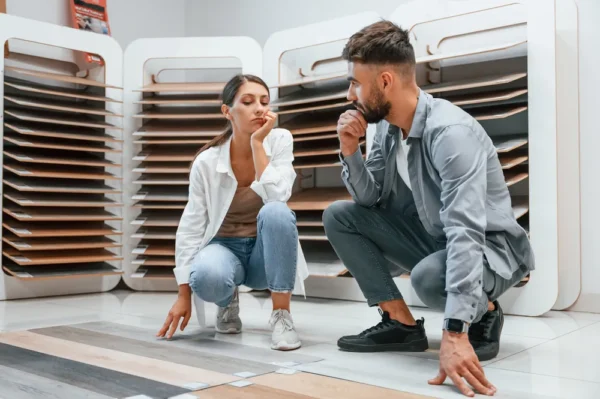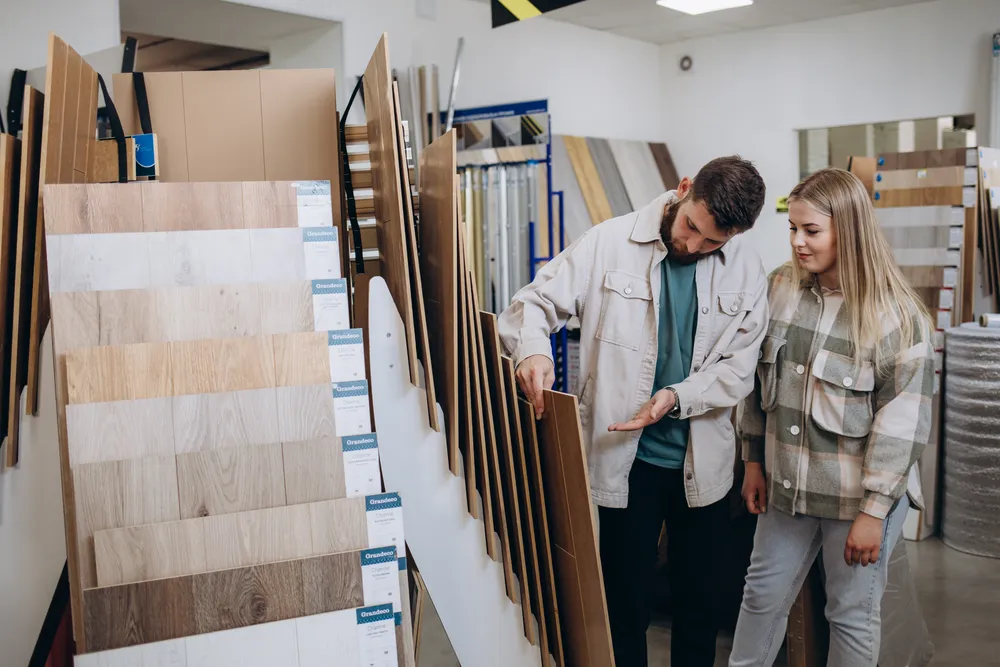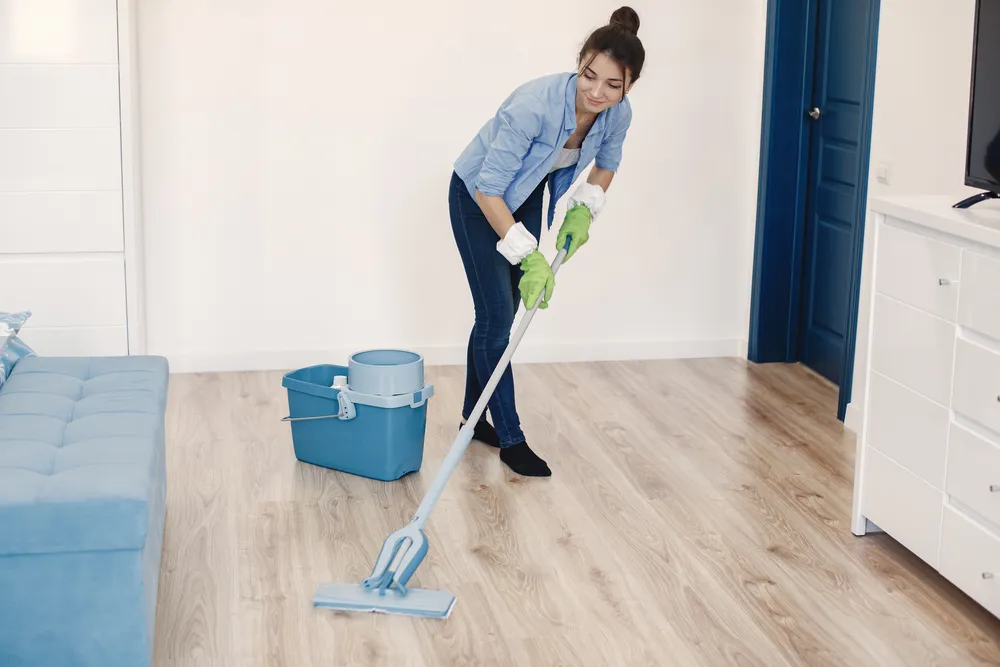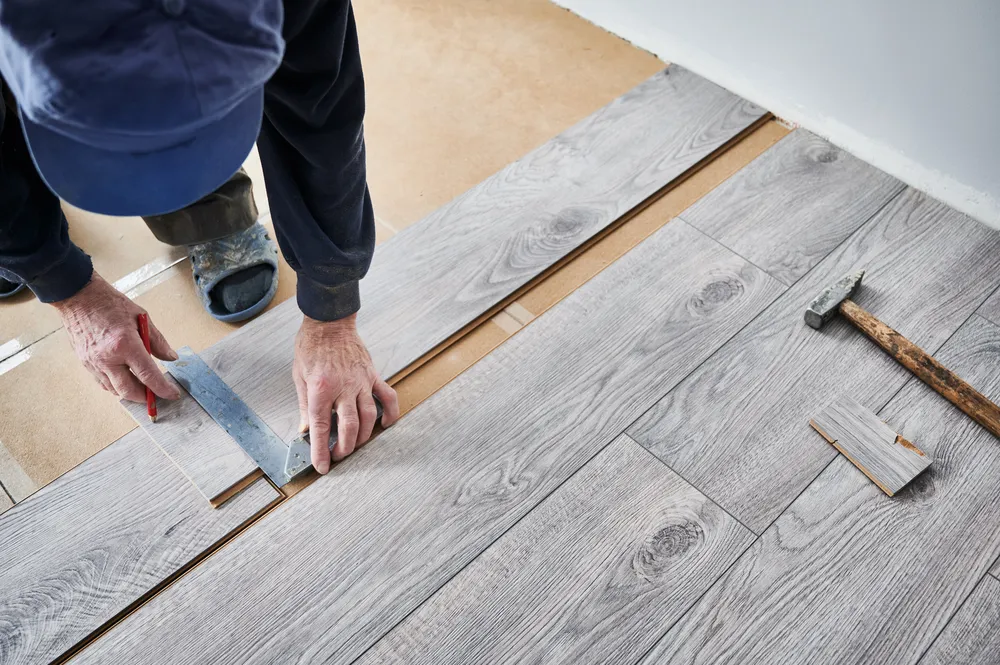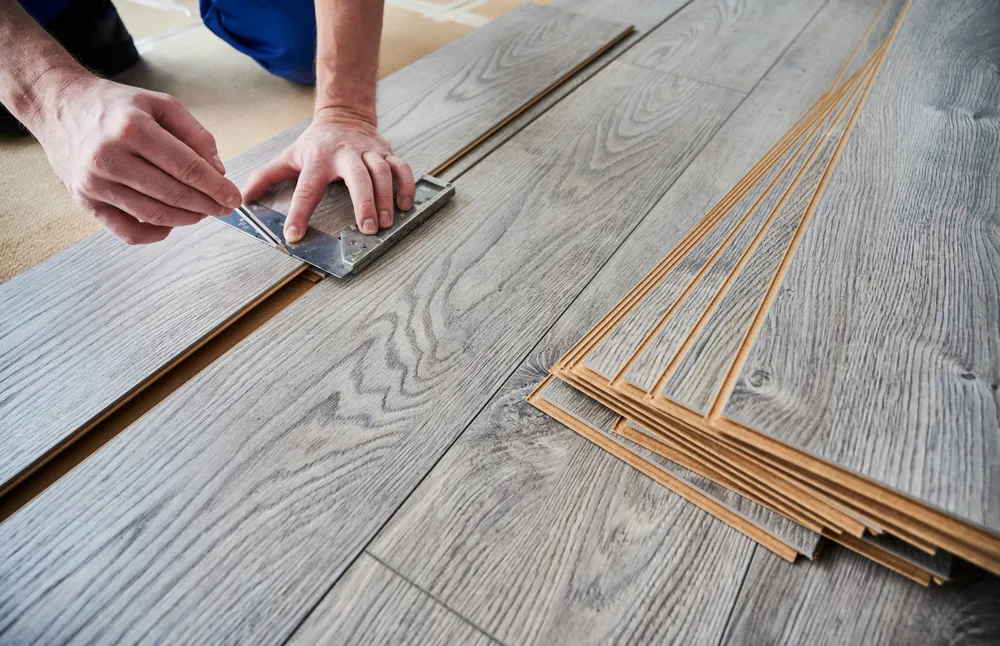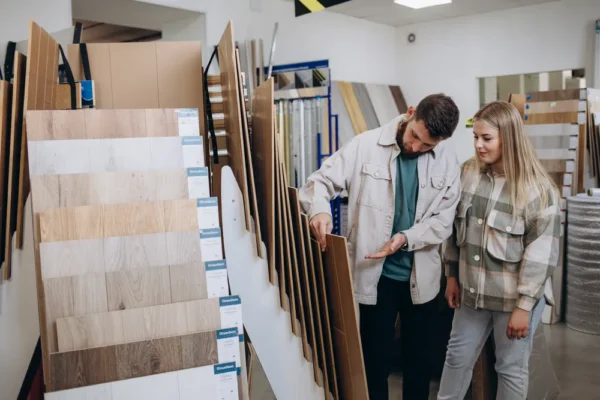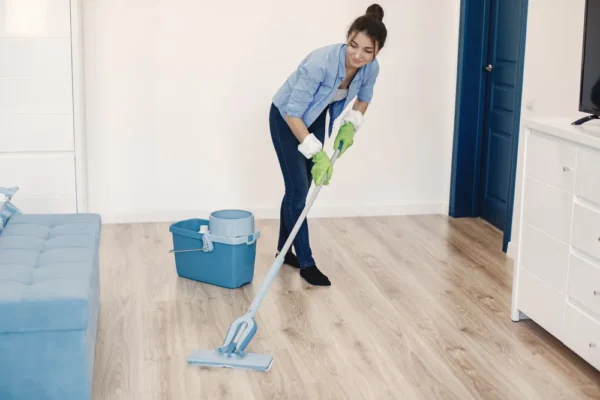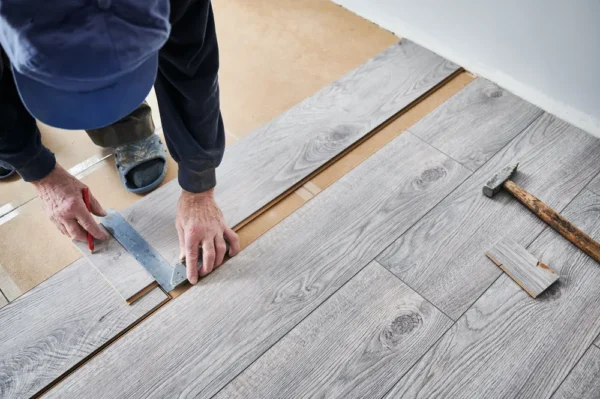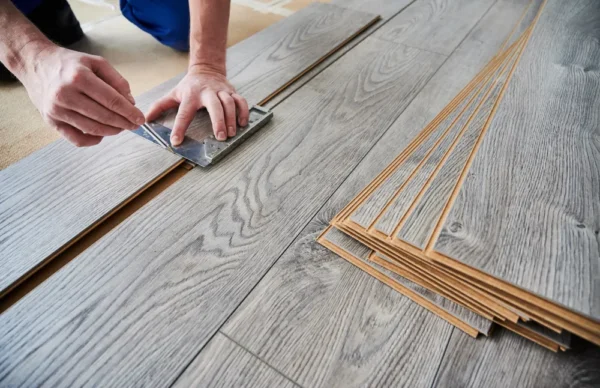Introduction
Importance of Planning When Installing New Flooring
New flooring installation requires careful planning to ensure success and longevity. Proper planning allows homeowners to consider budget, material selection, and timetable, enabling an efficient and customized installation procedure. Thoughtful preparation can also foresee and resolve issues, minimizing disruptions and guaranteeing a smooth flooring transition. In this article we will cover the most important topic What to do with Furniture When Getting New Flooring? For your living room improvement we’ve covered many article such as How to Arrange Two Sofas in Living Room?
Significance of Addressing Furniture Placement during Flooring Installation
The visual appeal, usefulness, and endurance of new flooring depend on furniture placement during installation. Moving heavy furniture or appliances can harm flooring, so homeowners should plan furniture placement. Strategic furniture placement can also improve the room’s visual flow and spatial organization, improving its design and functionality. Thus, incorporating furniture placement into the installation creates a harmonious look that increases the home’s attractiveness and functionality.
Preparing Furniture for Flooring Installation
Assessing the Condition of Existing Furniture
Furniture condition must be assessed before flooring installation. Before moving furniture, check for scratches, dents, and loose joints that may need repair. This examination ensures the furniture is ready for the new flooring, reducing damage and wear.
Determining if Furniture needs to be Moved or Replaced
Consider moving or replacing furniture to fit the new flooring. Consider style, size, utility, and compatibility with new flooring material. For installation, furniture may need to be temporarily moved, or obsolete or incompatible furniture may need to be replaced to satisfy aesthetic and functional requirements.
Measuring Furniture Dimensions and Room Layout
To arrange furniture on the new flooring, measure its size and the room layout. To ensure furniture fits easily, measure furniture width, length, and height, as well as entrances, hallways, and other access points. Use this information to create a furniture layout plan that maximizes space and utility while matching the room’s design.
Identifying Heavy or Delicate Furniture Pieces
Identify heavy or delicate items that may need extra flooring installation care. If not supported or moved carefully, heavy furniture like sofas, mattresses, and bookcases can indent the flooring. Glass tables and antiques may need extra protection during installation to avoid breakage or damage. Note these objects and arrange their safe handling and placement on the new flooring.
Options for Handling Furniture during Flooring Installation
Moving Furniture to another Room
One choice is moving the furniture to a different room in the house during the flooring installation. While still easy to get to, this lets residents keep their furniture out of the way during installation. Before the flooring is put down, move the furniture to a room that isn’t being worked on, like the bedroom or the dining room.
Temporarily Relocating Furniture to a Storage Unit
People doing major flooring repairs or who don’t have much room in their homes may be able to move their furniture to a storage unit briefly. Renting a storage unit is a safe and easy way to keep your furniture and other items while they are being installed. This will keep them safe and secure until they return to the house.
Elevating Furniture on Sliders or Furniture Gliders
Elevating furniture on sliders or gliders protects floors and makes heavier furniture simpler to transport. Sliders and gliders reduce furniture-floor friction, making movement easy. This solution is perfect for homeowners who wish to keep their furniture inside during flooring installation but avoid damage.
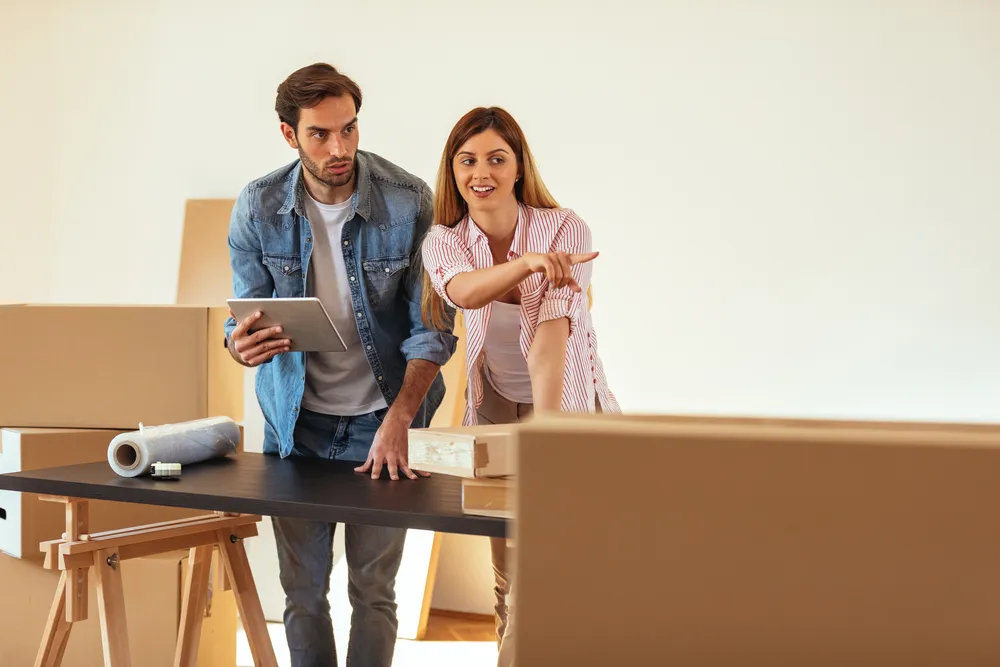
Utilizing Professional Furniture Moving Services
Hiring professional furniture moving services is a great choice for homeowners who would rather not do the heavy lifting. A professional moving company has the skills, knowledge, and tools to move your furniture quickly and safely, ensuring it is moved and put carefully. This choice gives you peace of mind and saves you the trouble of moving your items.
Disassembling Large Furniture Pieces for Easier Transportation
Taking apart big furniture like bed frames, tables, and desks can make moving them easier and more manageable while putting in flooring. Taking apart furniture into smaller pieces makes it lighter and easier to move through doorways and other tight areas. Label and organize the parts that need to be put back together so they are easier to find when the flooring work is done.
Protecting Furniture during Flooring Installation
Using Furniture Blankets or Moving Pads to Prevent Scratches and Dents
Using moving pads or furniture blankets to protect furniture from scratches and dents during carpet installation is a good idea. These protected layers cushion and insulate against impact, which makes it less likely that moving furniture across the floor will damage it. Before moving, ensure all your furniture is safe by wrapping it firmly in blankets or pads.
Covering Furniture with Plastic Sheets or Tarps to Shield from Dust and Debris
Protecting furniture from dust and dirt created during flooring installation is very important. Use plastic sheets or tarps to do this. Cover all the furniture to make a shield that keeps dust from settling on surfaces or getting into cracks. This safety step helps keep the furniture clean and in good shape while the renovations are going on.
Applying Felt Pads to Furniture Legs to Avoid Scratching the New Flooring
Attaching felt pads to the legs of furniture is a good way to keep the new floor from getting scratched. Putting these soft pads between furniture and floors keeps them from rubbing against each other and causing scratches or scuffs. Make sure the felt pads are firmly attached to the legs of the furniture so that they protect the floor consistently and don’t move around, which could damage the floor.
Removing Fragile or Valuable Items from Furniture Surfaces
Avoid damage or loss during flooring installation; taking fragile or valuable items off furniture surfaces is best. Accidents and mistakes are less likely to happen if you clear furniture of fragile decorations, glassware, electronics, and other weak items. These things should be kept in a safe place until the flooring installation is done to keep them safe.
Timing Furniture Placement with Flooring Installation
Coordinating with Flooring Contractors for Optimal Scheduling
It’s important to work well with the carpet contractors for the best furniture placement planning during installation. Talk to contractors beforehand to set up installation dates, plan timelines, and discuss logistics. Homeowners can minimize disruptions and speed up the flooring installation process by ensuring clear schedules and standards.
Allowing Sufficient Time for Flooring Installation and Furniture Repositioning
Allow enough time to rearrange furniture and put down new flooring so you don’t have to rush the process or run into delays. When setting deadlines, you should consider the job size, the type of flooring, and how hard it will be to place the furniture. Give contractors enough time to finish the job and give homeowners enough time to rearrange their items once the flooring is down carefully.
Planning Ahead for Potential Delays or Unexpected Challenges
Prepare ahead of time for delays or problems you didn’t expect during the flooring installation. Plan for things that might go wrong with the supply chain, bad weather, or unplanned problems that could cause the project to run late. The schedule should be flexible enough to allow for unplanned events, and plans should be changed to ensure the work goes smoothly.
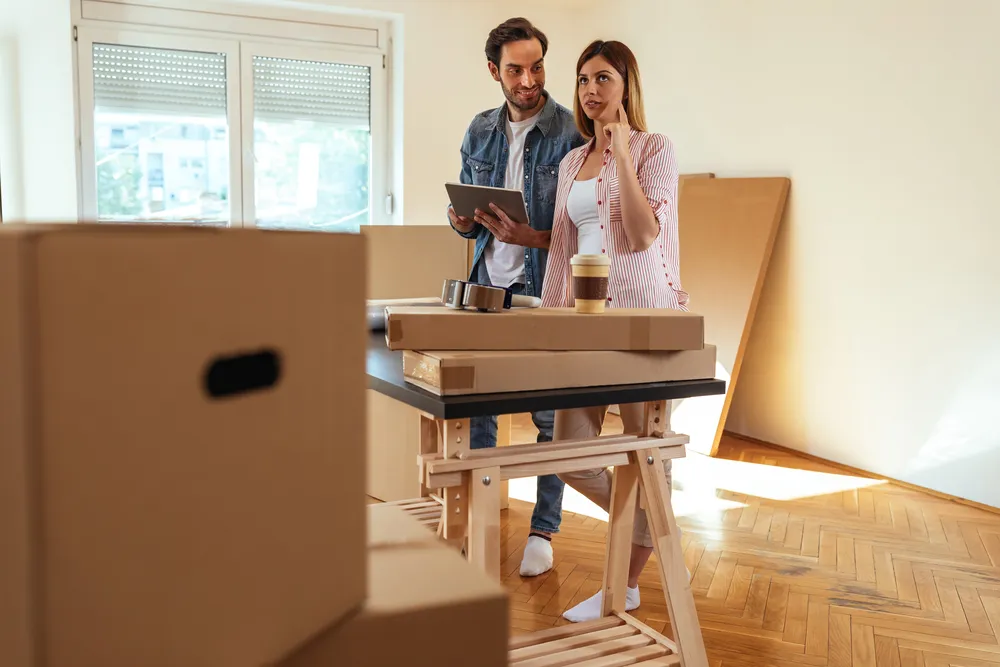
Post-Installation Furniture Arrangement
Reassembling Furniture in the Newly Floored Room
After the flooring is put down, put the furniture back together in the room according to the plan. Be careful not to damage the new flooring when you move the furniture back into place. Ensure all the pieces are firmly in place and lined up correctly to make a good living space that works well.
Experimenting with Different Furniture Layouts to Maximize Space and Functionality
Try different ways to arrange your furniture to make the most of the room’s space and usefulness. When arranging furniture, think about the size of the room, focus points, and how people will be moving through it. Try different arrangements to find the one that best suits your family’s wants and tastes.
Incorporating Area Rugs or Furniture Pads to Enhance Design Aesthetics and Protect Flooring
Use area rugs or furniture pads to enhance the room’s décor and protect the new flooring. Area rugs give warmth, texture, and visual appeal while protecting high-traffic areas. Furniture pads under heavy or often used furniture avoid flooring scratches, dents, and wear.
Adjusting Furniture Placement Based on Natural Light and Traffic Flow Considerations
Furniture placement should take into account natural light and room traffic. Arrange furniture to maximize natural light and minimize shadows. Keep corridors and circulation areas free for easy movement. Consider the functionality and comfort of the furniture placement in the room’s layout and use.
Maintenance Tips for Furniture and Flooring
Regularly Cleaning and Dusting Furniture to Prevent Buildup on New Flooring
Clean and dust furniture periodically to prevent debris buildup on new floors. Remove dust, dirt, and other particles from furniture and upholstery with a soft cloth or vacuum cleaner attachment. Keep furniture clean to avoid transmitting dirt and debris onto new flooring, protecting its look.
Using Appropriate Cleaning Products for Different Types of Flooring Surfaces
Maintain flooring integrity and look using suitable cleaning products and methods for each type. Ask manufacturers or flooring professionals about the best hardwood, laminate, tile, and carpet cleaning products and methods. Avoid strong cleansers that may damage or discolor flooring.
Inspecting Furniture Legs and Feet for Wear and Tear to Prevent Damage to Flooring
Check furniture legs and feet for scratches, dents, and loose fittings to protect flooring. Replace old or damaged furniture pads or glides to protect and support furniture. To prevent flooring scratches and indents, use felt pads or rubber caps.
Implementing Preventive Measures to Prolong the Lifespan of Both Furniture and Flooring
Preventive maintenance extends the life of furniture and flooring, decreasing repairs and replacements. High-traffic areas can be protected from flooring wear using furniture coasters or rugs. Avoid dragging heavy furniture or sharp things over the floor to avoid scratches. To maintain furniture and flooring, vacuum, sweep, and mop regularly.
Conclusion
Several furniture handling tips have been mentioned during flooring installation. These include evaluating furniture condition, choosing moving alternatives, protecting furniture during installation, and scheduling placement. By carefully considering these factors, homeowners can avoid disturbances and smoothly adjust to their newly floored room.
Furniture handling during flooring installation requires proactive planning and precautionary procedures. Homeowners may protect their furniture and floors and have a successful remodeling by anticipating problems, scheduling, and taking precautions. Planning and preparation result in a smoother, more rewarding experience.
Professional advice is recommended for households with complex furniture and flooring issues. Experts can advise on complex furniture arrangements, flooring materials, and installation requirements. Professional help guarantees that furniture and flooring are handled carefully and effectively, resulting in ideal outcomes and long-term enjoyment.
In conclusion, furniture handling during flooring installation involves forethought, attention to detail, and care. By following essential principles, taking precautions, and obtaining professional help, homeowners may confidently traverse the process and achieve a beautiful, functional living environment.



